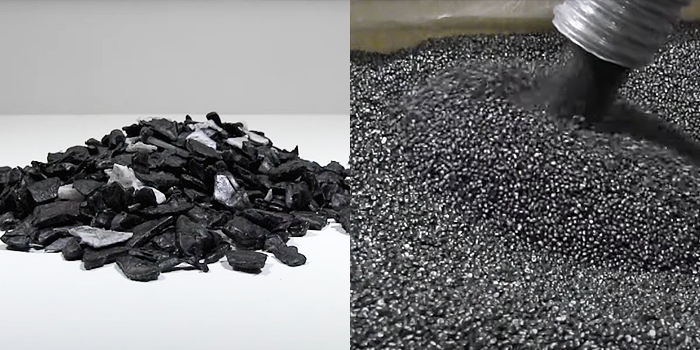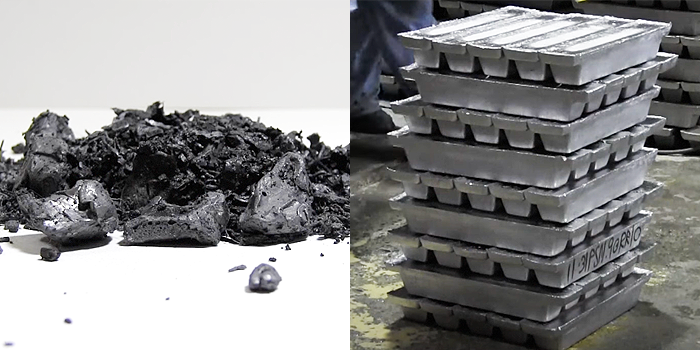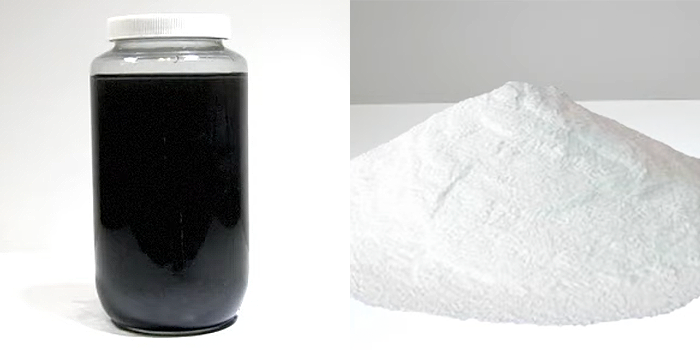Lead batteries reign as the most recycled consumer product in the U.S. today and the most sustainable battery technology; 99% of lead batteries are safely recycled in an established, coast-to-coast network of advanced recycling facilities. Watch the video below to learn about the safe and innovative battery recycling process.
The Lead Battery Recycling Process
Through a coast-to-coast network of retail stores, service and distribution centers, spent batteries are collected, sorted and transported to recycling facilities for processing.
At the recycling facility, the battery is broken apart in a hammer mill, a machine that breaks the battery into pieces. The broken battery pieces then go into a vat, where the lead and heavy materials fall to the bottom while the plastic rises to the top. At this point, polypropylene pieces are scooped away and the liquids are drawn off, leaving the lead and heavy metals. Each of the materials then begins its own recycling journey.

Plastic
The polypropylene pieces are washed, blown dry and sent to a plastic recycler where the pieces are melted together into an almost-liquid state. The molten plastic is put through an extruder that produces small plastic pellets of a uniform size. Those pellets are sold to the manufacturer of battery cases and the process begins again.

Lead
The lead grids, lead oxide and other lead parts are cleaned and melted together in smelting furnaces.
The molten lead is poured into ingot molds. Large ingots, weighing about 2,000 pounds are called hogs. Smaller ingots, weighing 65 pounds, are called pigs. After a few minutes, the impurities, otherwise known as dross, float to the top of the still-molten lead in the ingot molds. The dross is scraped away, and the ingots are left to cool.
When the ingots are cool, they are removed from the molds and sent to battery manufacturers, where they are re-melted and used in the production of new lead plates and other parts for new batteries.

Sulfuric Acid
Used battery acid can be handled in two ways.
- The acid is neutralized with an industrial compound similar to household baking soda. This turns the acid into water. The water is treated, cleaned and tested to be sure it meets clean water standards. Then it is released into the public sewer system.
- Another way to treat acid is to process it and convert it to sodium sulfate, an odorless white powder that’s used in laundry detergent, glass and textile manufacturing. This takes a material that would be discarded and turns it into a useful product. Acid can also be reclaimed and reused in new battery products through innovative recycling processes.
…lead batteries [will remain] the dominant technology for SLI, its greatest potential is for renewable energy storage…”


